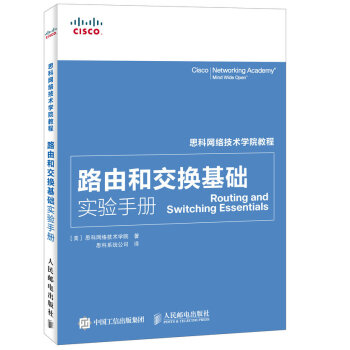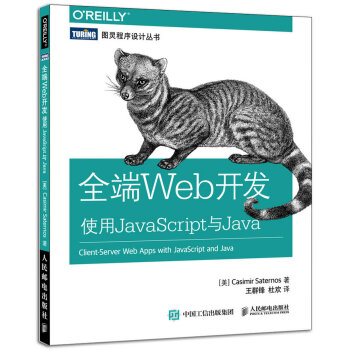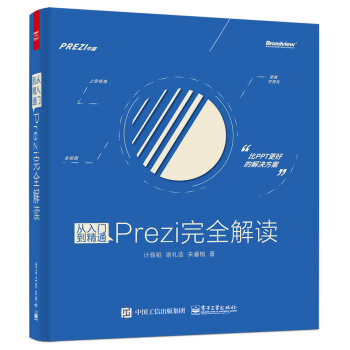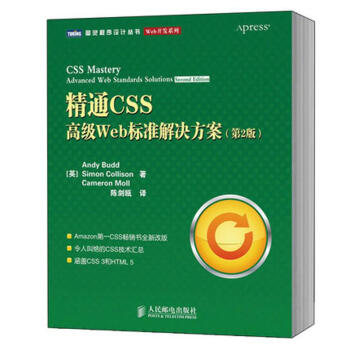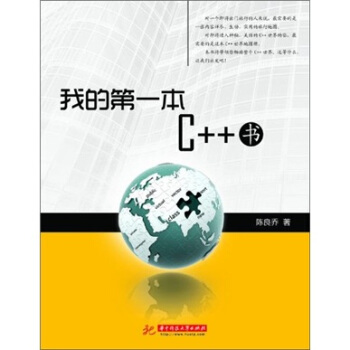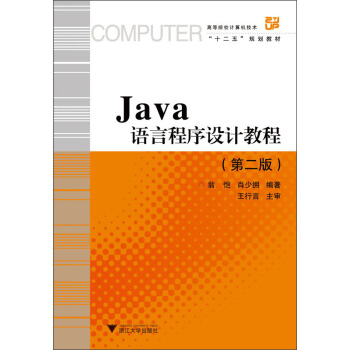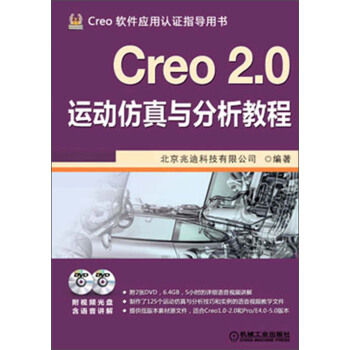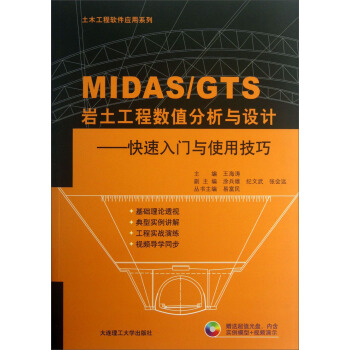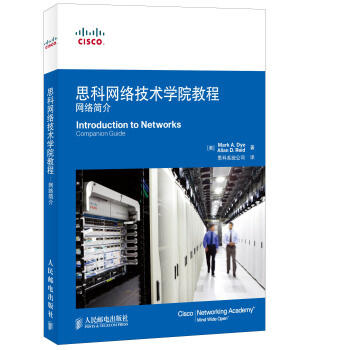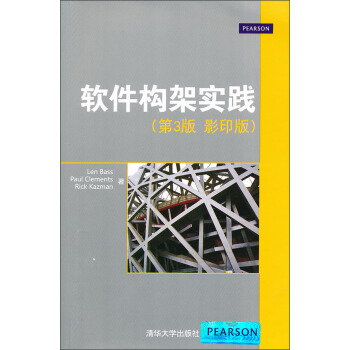

具体描述
编辑推荐
《软件构架实践(第3版 影印版)》特色主题:◆软件构架的背景:技术角度、项目角度、业务角度和专业角度
◆软件构架的竞争力:对于个人和组织的意义
◆业务目标的依据及其对软件构架的影响
◆软件构架层面的重要需求及其确定方式
◆软件生命周期中的构架,包括以设计思维为前提的生成一测试:实现期间的软件构架一致性:构架与测试j构架与敏捷开发
◆构架与当前技术潮流(比如云计算,社交网络和终端用户设备)
内容简介
《软件构架实践(第3版 影印版)》是一本荣获大奖且影响深远的经典,目前已经全面修订,充分体现了这一领域的最新进展。基于软件开发的真实现状,《软件构架实践(第3版 影印版)》再次以全新的角度引入软件构架的相关概念和最佳实践,阐述软件系统是如何架构的,软件系统中的各个要素之间又是如何相互作用的。有别于实现细节、算法和数据表示,软件构架是达成高品质软件的关键,是一种可重用于后续软件系统的资产,对软件企业的商业策略至关重要。作者围绕着软件构架影响周期的概念对本书前一版进行了重构。每个周期都表明了软件构架是如何产生影响的,同时它又受哪些因素的影响。软件构架在特定的背景下发挥着关键性的作用。这些背景包括技术环境、项目的生命周期、组织的业务概况和架构师的专业实践。作者还进一步延展了质量属性,仍然以构架理念为中心(用单独一章内容来专门介绍每个属性),进一步拓宽了软件构架模式。
如果要参与或者负责大型软件系统的设计、开发和管理,你会发现这本书是很有价值的参考资源,可以帮助你紧跟技术潮流。
内页插图
目录
prefacereader’s guide
acknowledgments
part one: introduction
chapter 1: what is software architecture?
1.1 what software architecture is and what it isn’t
1.2 architectural structures and views
1.3 architectural patterns
1.4 what makes a “good” architecture?
1.5 summary
1.6 for further reading
1.7 discussion questions
chapter 2: why is software architecture important?
2.1 inhibiting or enabling a system’s quality attributes
2.2 reasoning about and managing change
2.3 predicting system qualities
2.4 enhancing communication among stakeholders
2.5 carrying early design decisions
2.6 defining constraints on an implementation
2.7 influencing the organizational structure
2.8 enabling evolutionary prototyping
2.9 improving cost and schedule estimates
2.10 supplying a transferable, reusable model
2.11 allowing incorporation of independently developed components
2.12 restricting the vocabulary of design alternatives
2.13 providing a basis for training
2.14 summary
2.15 for further reading
2.16 discussion questions
chapter 3: the many contexts of software architecture
3.1 architecture in a technical context
3.2 architecture in a project life-cycle context
3.3 architecture in a business context
3.4 architecture in a professional context
3.5 stakeholders
3.6 how is architecture influenced?
3.7 what do architectures influence?
3.8 summary
3.9 for further reading
3.10 discussion questions
part two: quality attributes
chapter 4: understanding quality attributes
4.1 architecture and requirements
4.2 functionality
4.3 quality attribute considerations
4.4 specifying quality attribute requirements
4.5 achieving quality attributes through tactics
4.6 guiding quality design decisions
4.7 summary
4.8 for further reading
4.9 discussion questions
chapter 5: availability
5.1 availability general scenario
5.2 tactics for availability
5.3 a design checklist for availability
5.4 summary
5.5 for further reading
5.6 discussion questions
chapter 6: interoperability
6.1 interoperability general scenario
6.2 tactics for interoperability
6.3 a design checklist for interoperability
6.4 summary
6.5 for further reading
6.6 discussion questions
chapter 7: modifiability
7.1 modifiability general scenario
7.2 tactics for modifiability
7.3 a design checklist for modifiability
7.4 summary
7.5 for further reading
7.6 discussion questions
chapter 8: performance
8.1 performance general scenario
8.2 tactics for performance
8.3 a design checklist for performance
8.4 summary
8.5 for further reading
8.6 discussion questions
chapter 9: security
9.1 security general scenario
9.2 tactics for security
9.3 a design checklist for security
9.4 summary
9.5 for further reading
9.6 discussion questions
chapter 10: testability
10.1 testability general scenario
10.2 tactics for testability
10.3 a design checklist for testability
10.4 summary
10.5 for further reading
10.6 discussion questions
chapter 11: usability
11.1 usability general scenario
11.2 tactics for usability
11.3 a design checklist for usability
11.4 summary
11.5 for further reading
11.6 discussion questions
chapter 12: other quality attributes
12.1 other important quality attributes
12.2 other categories of quality attributes
12.3 software quality attributes and system quality attributes
12.4 using standard lists of quality attributes–or not
12.5 dealing with “x-ability”: bringing a new quality attribute into the fold
12.6 for further reading
12.7 discussion questions
chapter 13: architectural tactics and patterns
13.1 architectural patterns
13.2 overview of the patterns catalog
13.3 relationships between tactics and patterns
13.4 using tactics together
13.5 summary
13.6 for further reading
13.7 discussion questions
chapter 14: quality attribute modeling and analysis
14.1 modeling architectures to enable quality attribute analysis
14.2 quality attribute checklists
14.3 thought experiments and back-of-the-envelope analysis
14.4 experiments, simulations, and prototypes
14.5 analysis at different stages of the life cycle
14.6 summary
14.7 for further reading
14.8 discussion questions
part three: architecture in the life cycle
chapter 15: architecture in agile projects
15.1 how much architecture?
15.2 agility and architecture methods
15.3 a brief example of agile architecting
15.4 guidelines for the agile architect
15.5 summary
15.6 for further reading
15.7 discussion questions
chapter 16: architecture and requirements
16.1 gathering asrs from requirements documents
16.2 gathering asrs by interviewing stakeholders
16.3 gathering asrs by understanding the business goals
16.4 capturing asrs in a utility tree
16.5 tying the methods together
16.6 summary
16.7 for further reading
16.8 discussion questions
chapter 17: designing an architecture
17.1 design strategy
17.2 the attribute-driven design method
17.3 the steps of add
17.4 summary
17.5 for further reading
17.6 discussion questions
chapter 18: documenting software architectures
18.1 uses and audiences for architecture documentation
18.2 notations for architecture documentation
18.3 views
18.4 choosing the views
18.5 combining views
18.6 building the documentation package
18.7 documenting behavior
18.8 architecture documentation and quality attributes
18.9 documenting architectures that change faster than you can document them
18.10 documenting architecture in an agile development project
18.11 summary
18.12 for further reading
18.13 discussion questions
chapter 19: architecture, implementation, and testing
19.1 architecture and implementation
19.2 architecture and testing
19.3 summary
19.4 for further reading
19.5 discussion questions
chapter 20: architecture reconstruction and conformance
20.1 architecture reconstruction process
20.2 raw view extraction
20.3 database construction
20.4 view fusion
20.5 architecture analysis: finding violations
20.6 guidelines
20.7 summary
20.8 for further reading
20.9 discussion questions
chapter 21: architecture evaluation
21.1 evaluation factors
21.2 the architecture tradeoff analysis method
21.3 lightweight architecture evaluation
21.4 summary
21.5 for further reading
21.6 discussion questions
chapter 22: management and governance
22.1 planning
22.2 organizing
22.3 implementing
22.4 measuring
22.5 governance
22.6 summary
22.7 for further reading
22.8 discussion questions
part four: architecture and business
chapter 23: economic analysis of architectures
23.1 decision-making context
23.2 the basis for the economic analyses
23.3 putting theory into practice: the cbam
23.4 case study: the nasa ecs project
23.5 summary
23.6 for further reading
23.7 discussion questions
chapter 24: architecture competence
24.1 competence of individuals: duties, skills, and knowledge of architects
24.2 competence of a software architecture organization
24.3 summary
24.4 for further reading
24.5 discussion questions
chapter 25: architecture and software product lines
25.1 an example of product line variability
25.2 what makes a software product line work?
25.3 product line scope
25.4 the quality attribute of variability
25.5 the role of a product line architecture
25.6 variation mechanisms
25.7 evaluating a product line architecture
25.8 key software product line issues
25.9 summary
25.10 for further reading
25.11 discussion questions
part five: the brave new world
chapter 26: architecture in the cloud
26.1 basic cloud definitions
26.2 service models and deployment options
26.3 economic justification
26.4 base mechanisms
26.5 sample technologies
26.6 architecting in a cloud environment
26.7 summary
26.8 for further reading
26.9 discussion questions
chapter 27: architectures for the edge
27.1 the ecosystem of edge-dominant systems
27.2 changes to the software development life cycle
27.3 implications for architecture
27.4 implications of the metropolis model
27.5 summary
27.6 for further reading
27.7 discussion questions
chapter 28: epilogue
references
about the authors
index
前言/序言
用户评价
作为一名在软件开发领域摸爬滚打了多年的老兵,我一直对“架构”这个词既熟悉又感到一丝飘渺。总觉得它像是一个高高在上的概念,离我们日常的编码工作有些距离。然而,这本《软件架构实践(第3版 影印版)》彻底改变了我的看法。它就像一位经验丰富的导师,没有摆出一副教训人的姿态,而是娓娓道来,将复杂的架构原则拆解得如同拼图般清晰。我特别欣赏书中对于“可观测性”的论述,这在当前微服务盛行的时代,其重要性不言而喻。作者从设计的源头就强调了如何构建易于监控、日志记录和追踪的系统,并提供了具体的实践方法,而不是停留在理论层面。书中提到的“故障注入”和“混沌工程”等概念,让我看到了如何主动地去发现和解决潜在的系统脆弱点,而不是被动地等待故障发生。这对于提升系统的鲁棒性和弹性,避免“上线即故障”的尴尬局面,有着至关重要的指导意义。我甚至觉得,这本书应该成为每一个初级开发者的必读书籍,因为它能够帮助他们从一开始就建立起正确的系统思维,避免走弯路。书中对“领域驱动设计”(DDD)的介绍也十分深入,它不仅仅是介绍DDD的术语和概念,更重要的是阐述了如何在实际项目中落地DDD,以及如何通过DDD来更好地理解业务需求,并将业务逻辑映射到软件设计中。这对于解决“业务与技术脱节”的问题,有着深远的意义。总而言之,这本书为我打开了一扇新的大门,让我看到了软件架构的魅力所在,也为我提供了切实可行的工具和方法。
评分这本《软件架构实践(第3版 影印版)》简直就是我近期阅读体验中的一匹黑马,让我对软件架构这一概念有了全新的认知。刚拿到书的时候,说实话,我对“影印版”三个字还有点顾虑,担心翻译质量或者排版会影响阅读体验。但当我翻开第一页,那种扎实的文字功底和清晰的逻辑梳理立刻打消了我的疑虑。书中并没有直接抛出晦涩难懂的概念,而是从实际问题出发,比如如何在高并发场景下设计一个稳定可靠的系统,或者如何平衡不同团队之间的开发效率和代码一致性。作者用大量生动且贴近现实的案例,详细阐述了各种架构模式的优缺点,以及在什么情况下应该选择哪种模式。我尤其喜欢其中关于“技术债务”的章节,它不仅仅是简单地罗列问题,而是深入分析了技术债务的成因,以及如何通过前瞻性的架构设计来规避或有效管理它。书中提出的“架构决策记录”(ADR)方法,让我眼前一亮,这是一种非常系统化和可视化的方式来记录和沟通架构选择背后的原因和权衡,这对于团队协作和知识传承来说,其价值简直无法估量。我曾在一个项目中,因为初期架构决策缺乏清晰的记录,导致后期维护和迭代困难重重,耗费了大量不必要的时间和精力去追溯历史和理解设计初衷。如果当时能够运用书中介绍的方法,想必会事半功倍。这本书的语言虽然严谨,但并不枯燥,作者善于用类比和比喻来解释复杂的概念,使得即使是初学者也能快速领会。我已经迫不及待地想把书中的一些理念应用到我目前正在负责的项目中,相信一定能带来显著的改进。
评分收到《软件架构实践(第3版 影印版)》这本书,我当时的心情是既期待又带着点审慎。毕竟,架构是一个非常宏大且关键的领域,一本好的架构书籍能够极大地提升开发者的视野和能力。这本书没有辜负我的期待,它以一种非常沉稳、扎实的方式,向我展示了软件架构的艺术和科学。我特别欣赏书中关于“可维护性”和“可扩展性”的深入探讨。在当今快速变化的软件行业,一个系统如果不能做到易于维护和灵活扩展,那么它很快就会被淘汰。作者通过生动的例子,阐述了如何通过模块化设计、清晰的接口、解耦等方式,来提高代码的可读性和可修改性。对于“可扩展性”,书中则从水平扩展和垂直扩展的视角,详细介绍了各种实现方案,以及它们各自的优缺点和适用场景。我曾经在负责一个项目时,面临着用户量激增的挑战,如果不能有效地进行水平扩展,整个系统将面临崩溃的风险。这本书为我提供了宝贵的思路和方法,让我能够提前规划和实施相应的扩展策略。此外,书中对“成本效益”的考量也让我眼前一亮。架构设计不仅仅是技术上的追求,更需要兼顾业务的实际需求和经济成本。作者在书中强调了在做出架构决策时,需要权衡技术投入、开发成本、运维费用以及潜在的风险,从而找到最适合业务的平衡点。这种务实的态度,让这本书更具指导意义。总之,这本书不仅仅是关于技术,更是关于如何做出明智的、可持续的决策,这对于任何希望在软件开发领域有所建树的工程师来说,都是一本不可多得的良师益友。
评分坦白说,我对“影印版”的书籍一直有些心理负担,担心印刷质量和内容呈现的效果。但是,《软件架构实践(第3版 影印版)》这本书,从我拿到手的那一刻起,就展现出了它非同寻常的价值。它并非是一本空谈理论的教科书,而是充满实际操作指南和深刻洞察的宝藏。书中对于“性能优化”的章节,简直可以称得上是我的“救命稻草”。我曾经在优化一个性能瓶颈极高的系统时,走了很多弯路,花费了大量的时间去尝试各种方案,但效果却不尽如人意。这本书则从根本上剖析了性能问题的根源,从硬件层面到软件设计,再到算法和数据结构的优化,提供了一个系统性的分析框架。作者列举了大量的实际案例,展示了如何通过精细化的性能调优,显著提升系统的响应速度和吞吐量,比如通过缓存策略、异步处理、并发控制等手段。我特别喜欢书中关于“延迟”、“吞吐量”和“并发度”这三个核心性能指标的深入解析,以及如何根据业务场景来选择合适的优化方向。此外,书中对“安全架构”的论述也让我印象深刻。它并非简单地罗列常见的安全漏洞,而是从架构设计的层面,探讨如何构建“安全第一”的系统。从输入校验、权限控制到数据加密,再到应对DDoS攻击的策略,都进行了详尽的阐述。这对于提高系统的安全性和抵御网络攻击,起到了非常关键的指导作用。这本书的深度和广度,让我感觉自己仿佛获得了一份无价的“架构蓝图”,指引我如何在复杂多变的软件世界中,构建出坚实可靠的基石。
评分老实说,我拿到《软件架构实践(第3版 影印版)》这本书时,并没有抱有太高的期望。毕竟市面上关于架构的书籍实在太多了,良莠不齐。但这本书却给了我一个大大的惊喜。它不像其他一些书那样,上来就给你灌输一堆理论,然后让你自己去消化。这本书更像是带你进入一个真实的项目现场,从开发者和架构师的视角,一步步地剖析如何在实际环境中做出优秀的架构决策。我尤其赞赏书中关于“系统拆分”的章节,它清晰地阐述了在面对单体应用臃肿、难以维护的问题时,如何进行有效的模块化和微服务化拆分。作者并没有简单地推荐“什么都拆成微服务”,而是详细地分析了拆分的粒度、边界的确定,以及如何处理服务间的通信和数据一致性等复杂问题。书中提出的“康威定律”以及如何利用它来指导架构设计,也让我受益匪浅。它让我意识到,团队的组织结构往往会反映在系统的架构中,反之亦然。如何设计一个能够支持团队高效协作的架构,是至关重要的。我之前在团队中遇到的一个瓶颈,就是不同团队之间因为技术栈和沟通方式的不同,导致集成变得异常困难。阅读了这一章节后,我才恍然大悟,原来很多问题都可以追溯到架构设计层面。此外,书中对“API设计”的探讨也十分精辟,它不仅仅关注了API的易用性和安全性,更强调了API作为系统对外接口的战略意义,以及如何通过良好的API设计来促进生态系统的发展。这本书的内容之丰富、讲解之透彻,着实让我感到震撼,它让我对如何构建可扩展、可维护、高性能的软件系统有了更深刻的理解。
评分还没时间看。
评分(1)每一个软件增量都要给出形式化描述,然后次描述经过变换得意实现。
评分(1)每一个软件增量都要给出形式化描述,然后次描述经过变换得意实现。
评分老师指定的教材,反正我是看不懂。
评分“净室”软件工程
评分挺好的东西,物有所值,划算
评分好好学习,增长知识与技能
评分好书!不过我还没看?
评分书到用时方恨少,事非经过不知难。养成自己随时随地都能学习的习惯,你的一生就会受用无穷。事业的发展,生活的丰富多彩,爱情的幸福美满,身心的健康快乐等等,总之,生活工作中我们时时处处都在学习当中。也许你仅仅把在学校,从书本上的学习当成学习了,但实际上那只是人生学习旅程的一部分。处处留心,培养对许多事物的兴趣爱好,你就会不断丰富自己的心灵,增长见识,对生命和生活的意义也就会更为理解。
相关图书
本站所有内容均为互联网搜索引擎提供的公开搜索信息,本站不存储任何数据与内容,任何内容与数据均与本站无关,如有需要请联系相关搜索引擎包括但不限于百度,google,bing,sogou 等,本站所有链接都为正版商品购买链接。
© 2026 windowsfront.com All Rights Reserved. 静流书站 版权所有

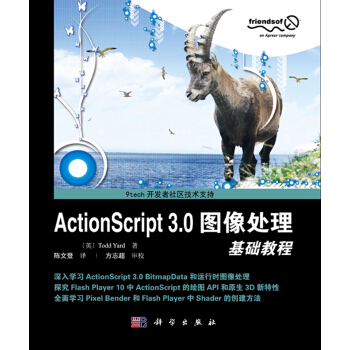

![请君入瓮:APT攻防指南之兵不厌诈 [Reverse Deception: Organized Cyber Threat Counter-Exploitation] pdf epub mobi 电子书 下载](https://pic.windowsfront.com/11569338/545b4b7aNce42781d.jpg)


